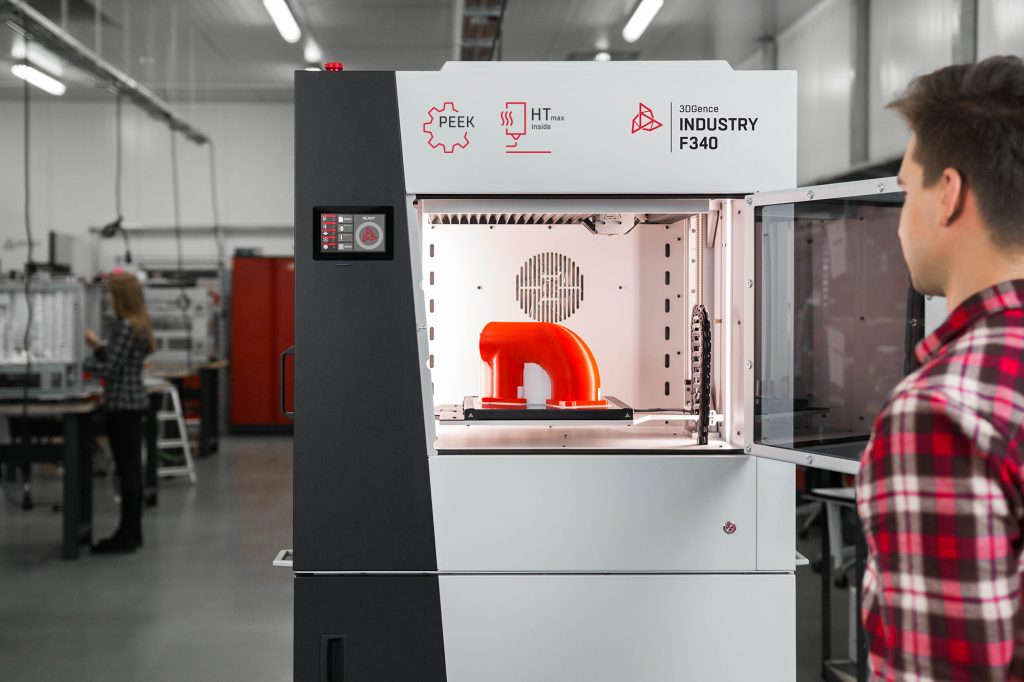There is no unifying metric for quantifying growth, or technological progress, in additive manufacturing. The best alternative is to look at trends and data to give us insights into the near future. In 2018, there were numerous announcements across materials, hardware, and design software for additive manufacturing. Collectively, some major themes are apparent from the year’s announcements.
High performance thermoplastics for material extrusion (fused filament fabrication), and selective laser sintering companies are now mainstream. Large chemical companies such as Solvay, Evonik, SABIC, and Mitsubishi Chemical are getting involved through partnerships and a strong presence at conferences.
Other large materials and chemicals companies have gotten involved in additive through investment or co-development. BASF continues to work with various 3D printer manufacturers on materials developments and has made some investments and acquisitions as well. Henkel has recently released a 3D printer and array of Loctite-branded materials at Formnext. Carpenter has made two acquisitions this year to further its additive strategy.
The desktop professional 3D printer market is filling in with material extrusion and smaller format selective laser sintering 3D printers. These systems compete on a more accessible price range from $5000 to $50,000 with performance and features often on par with industrial systems priced above $150,000. Major players in these areas include Roboze, AON3D, 3DGence, Dynamical Tools, Sinterit, and Sintratec.

Multiple metal additive process and printer announcements for production applications are in development and have delivery timelines in late 2019 and beyond. See “IMTS 2018: Is Metal 3D Printing Taking Over?”
Generative design started to receive more attention as leading startups and large design companies alike put resources into developing “design for additive solutions”.
Venture investments totalled $750M across 47 investments, with one investment in Carbon constituting $200M of that amount. The number and average investment size were significantly larger than in 2017 which saw $438M total from 38 investments.
There were 22 acquisitions made of significance to the industry, with 3D printing service providers being the most common acquisition target followed by technology-specific acquisitions. This number increased from 17 transactions completed in 2017.
Technology trends to watch for 2019 that have already started in 2018 are improvements in 3D printing process simulation software development, post-processing automation, and a broader range of materials designed for additive processes. Globally, there were 27 3D printing conferences held with another 23 that had notable 3D printing representation during the event. Next year proves to be even busier with 64 events planned for 2019. As 2018 draws to a close, the industry takes a breath and looks forward to an even busier 2019 filled with more announcements, new technologies, and novel 3D printing applications.
Submit your nominations now for the 3D Printing Industry Awards 2019.
Also, for the latest 3D Printing Industry news throughout 2019 subscribe to our newsletter, follow us on Twitter and like us on Facebook.
Looking for a fresh start in the new year? Visit 3D Printing Jobs to get a head start.



